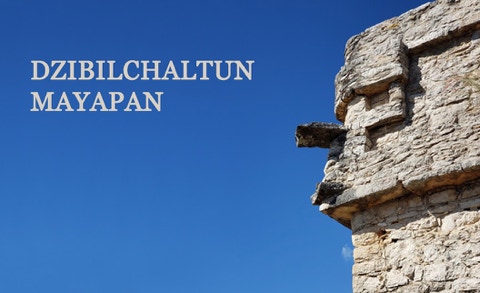MAYAPAN

1. DZIBILCHALTUN AND MAYAPAN Dzibilchaltun and Mayapam are in many respects opposites, the alpha and omega of Maya sites in the Northern Yucatan. Dzibilchaltun may have been the longest continuously occupied Mayan settlement in the area, dating from the Middle Pre-Classic to when the Franciscans built an open-air chapel in its Central Plaza after the Conquest. Mayapan, on the other hand, was the last major Mayan city and their only capital, established by 1264, destroyed by its own citizens in 1441, a century before the Spanish "entrada" or invasion of the Yucatan. Thus the two cities bear a similar relationship to each other as Edzna and Chichen Itza, the former with examples of Mayan architecture from the Pre-to the Post-Classical, the latter founded no earlier than 700 and abandoned by the Itza in 947 and finally defeated and replaced by Mayapan in the 15th Century. The two have in common their incongruous presence on the margins of modern Merida's urban sprawl, Dzibilchaltum on the north, Mayapan, the south. Driving from one to the other along the Perifico or Ring Road, one passes twenty unbroken miles of mammoth factories, automotive dealerships, apartment complexes centered around shopping malls, "big box" stores, gyms and recreation centers, cineplexes, gated communities and country clubs; the panoply of 21st Century globalization. Perhaps freeways are just Mexico's present-day sacbeob, cenotes, its beach clubs and high-rise condos, pyramids for its new industrialist and financier ajaws/ahaws (rulers.). Six million Maya still dwell on the margins of this newest alien social order.